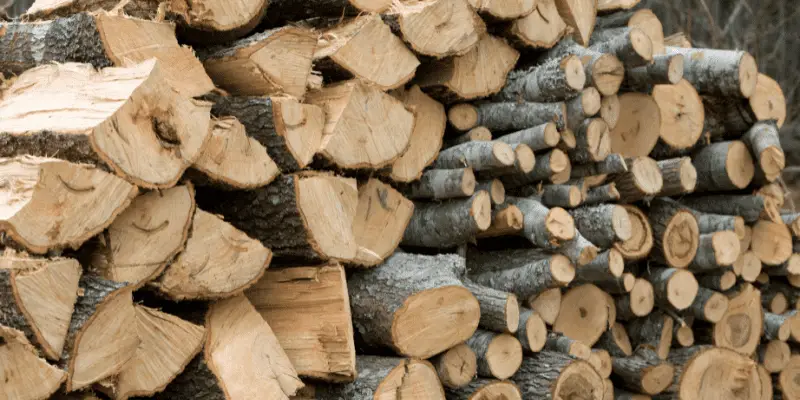In the Rick vs Cord Wood debate, it’s essential to weigh the pros and cons of each option. Choosing between rick and cord wood involves considering factors such as convenience, cost, and environmental impact.
The decision may also be influenced by local availability and regulations. It’s important to understand the differences between the two and how they align with your specific needs and preferences. By exploring the distinct attributes of rick and cord wood, you can make an informed choice that meets your heating requirements while being mindful of practical and ecological considerations.

Rick Vs Cord Wood: A Comparison
When it comes to choosing firewood for your heating needs, two popular options stand out: rick wood and cord wood. Both hold their own set of advantages, and understanding the differences can help you make an informed decision for your specific requirements. In this article, we’ll delve into the comparison of rick vs cord wood, exploring the benefits each option offers.
Benefits Of Rick Wood
- Convenient Size: The smaller size of rick wood makes it ideal for households with limited storage space.
- Quick Seasoning: Due to its smaller size, rick wood tends to dry and season faster than cord wood, making it a more readily available option.
- Easy Handling: Transporting rick wood is more manageable, especially for individuals who may not have the physical strength to handle larger cord wood pieces.
Benefits Of Cord Wood
- Economical: Purchasing wood in bulk cord quantities can often be more cost-effective in the long run, especially if you have high heating demands.
- Lower Maintenance: With larger pieces, you’ll spend less time and effort stacking and organizing cord wood compared to smaller rick wood pieces.
- Longer Burn Time: The larger pieces of cord wood can provide longer burning periods, reducing the frequency of restocking your fire.
Factors To Consider When Choosing Firewood
When it comes to heating your home with a wood-burning stove or fireplace, choosing the right firewood is crucial for efficiency, storage, and cost. Understanding the factors to consider when making this decision can help you make an informed choice between Rick and Cord wood.
Heating Efficiency
Heating efficiency is a crucial factor when choosing firewood. Different types of wood have varying energy outputs and burn rates. Hardwoods like oak and hickory tend to burn longer and produce more heat compared to softer woods like pine and aspen. Investing in high-quality firewood that burns efficiently can help you maximize the warmth generated from your wood-burning appliance.
Storage Space
Storage space is also an important consideration. For urban or suburban homeowners with limited storage space, cord wood may be impractical due to its larger size. In contrast, rick wood bundles are more manageable and can be easily stored in smaller spaces, making them a convenient choice for those with limited storage options.
Cost And Availability
Consider the cost and availability of firewood when making your decision. While cord wood is typically available in larger quantities and may be more cost-effective in the long run, rick wood bundles are often more readily available and can be purchased in smaller quantities, making them a convenient option for people with varying heating needs or budget constraints.
Environmental Considerations
The choice between using rick and cord wood can have significant environmental implications. When considering the environmental impact of these fuel options, it’s essential to evaluate factors such as sustainability and emissions. Let’s examine the environmental considerations of rick vs. cord wood in more detail.
Sustainability
Both rick and cord wood can be sustainable fuel sources when managed responsibly. Cord wood, typically sourced from well-managed forests or reclaimed wood, offers a renewable and sustainable energy option. Similarly, rick, when sourced from sustainable forestry practices, can also support environmental sustainability by ensuring the replenishment of the wood resource over time.
Emissions
When it comes to emissions, both rick and cord wood have their considerations. Cord wood combustion can produce emissions such as carbon dioxide, particulate matter, and other pollutants. However, with proper seasoning and efficient burning techniques, emissions from cord wood can be minimized. Rick, on the other hand, may produce fewer emissions due to its denser composition, leading to a more efficient burn and potentially lower emissions.
Best Practices For Storing And Using Firewood
When it comes to heating your home with a wood-burning stove or fireplace, the right firewood can make all the difference. Properly storing and using firewood is essential to ensure a consistent and efficient source of heat. In this section, we will discuss the best practices for storing and using firewood, including storage tips and proper usage techniques.
Storage Tips
Properly storing firewood is crucial to maintaining its quality and ensuring it burns efficiently. Here are some essential storage tips to keep in mind:
- Store firewood in a dry, well-ventilated area to prevent mold and insect infestations.
- Elevate the firewood off the ground using pallets or a firewood rack to prevent moisture absorption from the soil.
- Stack the firewood loosely to allow for proper air circulation, which helps to dry out any excess moisture.
- Keep the firewood covered with a tarp or roof to protect it from rain and snow while still allowing airflow.
Proper Usage Techniques
Using firewood properly can extend its burning time and reduce smoke emissions. Follow these techniques for efficient and responsible firewood usage:
- Start with seasoned firewood, which is wood that has been dried for at least six months to a year. Seasoned firewood burns hotter and produces less creosote buildup in your chimney.
- Avoid burning green or wet wood, as it generates less heat and more smoke, leading to a buildup of creosote and increased air pollution.
- Keep the fire burning hot by adding smaller pieces of firewood as needed and allowing enough airflow to maintain a clean, efficient burn.
- Clean out ashes regularly to prevent air flow blockages and maintain a clean burning environment.
Frequently Asked Questions For Rick Vs Cord Wood
What Are The Benefits Of Using Cord Wood For Heating?
Cord wood is a sustainable and cost-effective heating option. It is renewable, produces minimal emissions, and can provide long-lasting heat for your home. Using cord wood also supports local businesses and reduces reliance on fossil fuels.
Is Rick Wood A Better Option Than Cord Wood For Heating?
Rick wood, also known as wood stacks, can be a convenient option for smaller spaces or temporary heating needs. However, cord wood is generally preferred for its efficiency, cleaner burn, and longer-lasting heat output. Consider your specific heating needs when choosing between the two options.
How Should I Store Cord Wood For Optimal Quality And Burn Efficiency?
To ensure optimal quality and burn efficiency, store cord wood in a dry, well-ventilated area with protection from the elements. Elevate the wood off the ground and cover the top to prevent moisture. Proper storage will help maintain the wood’s energy content and reduce the risk of mold or decay.
Conclusion
Both Rick and cord wood have their distinct benefits for heating homes. Consider the cost, availability, and environmental impact when choosing the best option for your needs. Whether you opt for Rick or cord wood, make sure to maintain proper storage and moisture levels for optimal burning efficiency.



One thought on “Rick Vs Cord Wood: Choosing the Best Firewood for Your Needs”